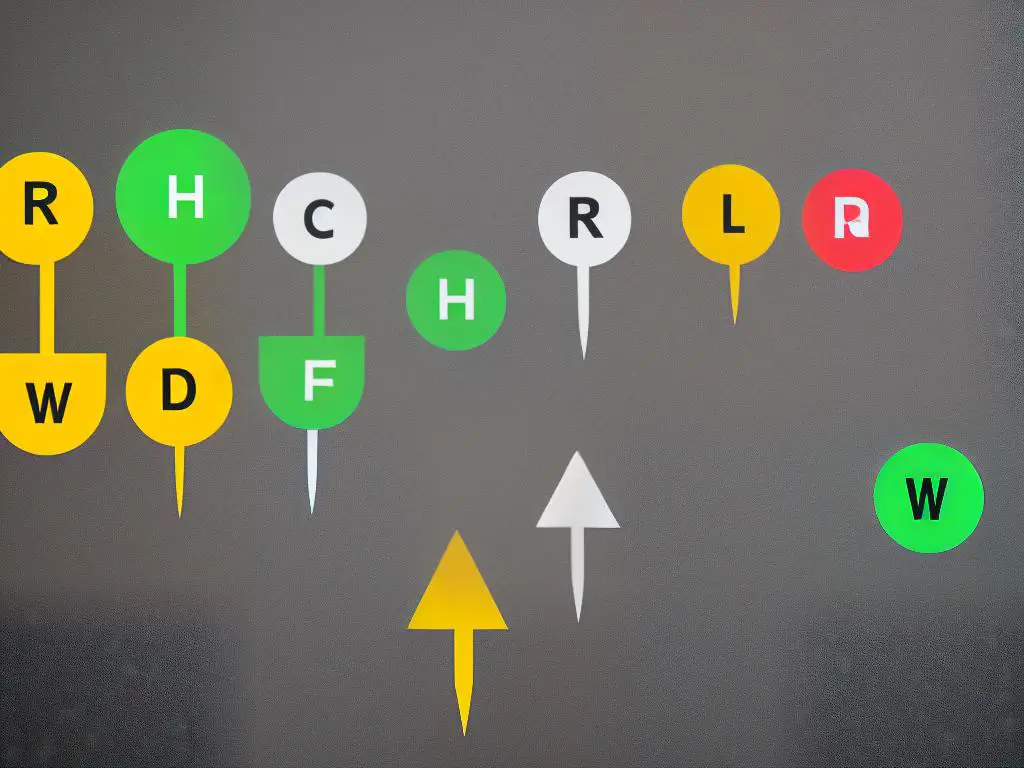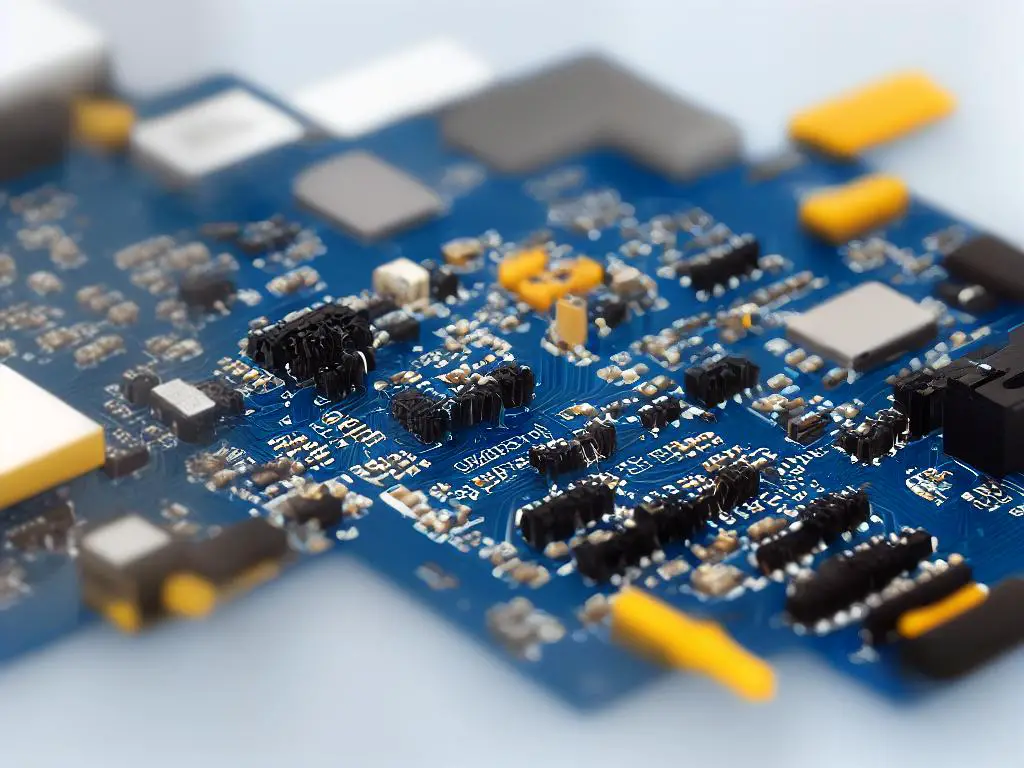The rapid advancements in artificial intelligence and natural language processing have given rise to sophisticated models like the Generative Pre-trained Transformer (GPT), capable of human-like understanding and generation of text – GPT Agents.
As the technology continues to evolve, industry experts strive to stay abreast of recent developments, its wider implications, and potential applications. This essay delves into the foundations of GPT and language models, the GPT model architecture and its variants, fine-tuning and training techniques, various applications of GPT models, ethical considerations and limitations, and future prospects and trends related to GPT technology.
Foundations of GPT Agents and Language Models
Table of Contents
- 0.1 Foundations of GPT Agents and Language Models
- 0.2 GPT Agents Model Architecture and Variants
- 0.3 Fine-Tuning and Training Techniques for GPT Agents
- 0.4 Applications of GPT Agent Models
- 0.5 Ethics and Limitations Concerning GPT
- 0.6 Future Prospects and Trends in GPT AI Agents
- 1 GPT Technology and Its Convergence with Advanced AI/ML Techniques
- 2 Trend in GPT Technology: Exploration of Domain Adaptation
- 3 GPT Direct Application in Various Sectors
- 4 AI Ethics and Governance
- 5 GPT Technology’s Capacity for Interaction with Other AI Systems
One crucial aspect in the development of the Generative Pre-trained Transformer (GPT) models is the concept of language models. Language models play an essential role in natural language processing (NLP) and understanding, as they attempt to predict the next word or token in a sequence given the context of the surrounding words.
This task is fundamental for a variety of applications such as machine translation, text summarization, and intelligent chatbots. The primary goal of language models is to capture the statistical patterns and structures of human language to generate coherent and contextually relevant responses.The foundation of GPT lies in the transformer architecture, which was proposed in the paper “Attention is All You Need” by Vaswani et al. in 2017. This model architecture revolutionized NLP, introducing a new method to handle and process sequences, especially for longer ones.
Unlike previous methods such as RNNs (Recurrent Neural Networks) and LSTMs (Long Short-Term Memory), transformers do not process sequences sequentially. Instead, they employ self-attention mechanisms to weigh the importance of each word in context, allowing for parallel computation and more efficient training.
Self-attention mechanisms are the key components of transformers and are responsible for identifying relationships between words in a context. This mechanism computes a set of weights that defines the contribution of each word to the model’s understanding of the current position’s meaning. Self-attention allows the model to process and understand complex sentences with contextually embedded relationships effectively.
In addition, the combination of multiple self-attention layers allows the model to capture a wider range of relationships between words, helping it generate better and more accurate text interpretations.
As it relates to Agent GPT, understanding the foundations of language models and transformers is instrumental in harnessing the power of GPT to create conversational AI. Agent GPT benefits from the generative nature of pre-trained transformer models, allowing it to produce contextually relevant and human-like responses during conversation.
The self-attention mechanism provides insight into the relationships between words in a given context, enabling the agent to generate coherent and fluent responses. As a result, Agent GPT has the potential to revolutionize various industries, providing enhanced customer support experiences, content generation, and data analysis.
As an industry expert, it is crucial to keep up with the continuous advancements in GPT and language models to maintain expertise in conversational AI systems like Agent GPT. The further development of these models will allow them to better understand the intricacies of human language, thereby expanding potential applications for AI agents such as GPT.
Staying informed about these advancements will significantly impact the implementation and success of conversational AI in various industry settings.

GPT Agents Model Architecture and Variants
The GPT (Generative Pre-trained Transformer) model architecture, a critical component of conversational AI systems like Agent GPT, is based on the Transformer architecture introduced by Vaswani et al. in 2017. This revolutionary architecture uses self-attention mechanisms to process input sequences in parallel, rather than sequentially, which results in substantial improvements in efficiency and scalability.
GPT Agent models are comprised of stacked Transformer layers, where each layer has multiple attention heads that enable the learning of different context and information representations from the input data. The model’s complexity, measured in the number of parameters or model weights, is determined by the number of layers and attention heads, as well as the overall width of the GPT model.
With the introduction of GPT-2, the model architecture was significantly scaled up. GPT-2 has 1.5 billion parameters, making it substantially more powerful and expressive than its predecessor. This increased scale enabled GPT-2 to generate more coherent and contextually rich responses, while maintaining an impressive degree of fluency in natural language generation tasks.
One of the notable features of GPT-2 is its zero-shot task transfer ability, which means it’s capable of handling new tasks without the need for further training, solely relying on a large pre-trained model and utilizing specific prompting techniques.
The evolution of GPT continued with the release of GPT-3, boasting a whopping 175 billion parameters. This massive increase in scale resulted in significant improvements in its ability to perform various tasks while maintaining human-like coherence and contextual understanding. GPT-3 has demonstrated remarkable few-shot learning capabilities – it can learn to perform a specific task with as little as one to a few examples provided in the prompt.
This versatility has led to a wide range of applications for GPT-3 including content generation, question-answering, translation, summarization, and more.
GPT model architecture also employs progressive layer normalization, which modifies the standard layer normalization approach in the Transformer architecture. This technique aims to improve the stability and convergence speed of these large-scale models during training. Furthermore, the initialization process for model weights in GPT is crucial, as initializing them from a distribution with a carefully selected standard deviation can lead to better convergence.
Overall, the development of GPT, GPT-2, and GPT-3 showcases the importance of architecture and scaling in improving the performance of language models. The GPT model architecture, with its Transformer layers, attention heads, and model weights, combined with its innovative training techniques, powers the unparalleled capabilities of these state-of-the-art language models.
These models have revolutionized natural language processing, paving the way for a new generation of AI-based applications and research directions.

Fine-Tuning and Training Techniques for GPT Agents
One major technique powering the success of GPT models is transfer learning, which enables fine-tuning and training these models for various specialized tasks. By leveraging a pre-existing model that has already been trained on massive datasets, practitioners can save significant time and resources compared to starting from scratch.
Transfer learning allows for the retention of learned features and general linguistic understanding, while subsequently fine-tuning the model using task-specific data. This approach enables GPT models to achieve better performance even with relatively smaller datasets, creating a smooth synergy between model architecture and training techniques.
Dataset preparation is an essential aspect of training GPT models. It involves gathering a large, diverse, and high-quality corpus of text that closely aligns with the domain in which the model will be deployed. Domain-specific datasets should be cleaned and pre-processed to ensure consistency and remove any irrelevant or noisy information.
Often, data augmentation can be employed to enhance the dataset by generating new samples derived from the original data. Creating a carefully crafted dataset not only contributes to enhanced model performance but also helps mitigate potential biases originating from the pre-training data.
To achieve optimal model performance, a range of optimization techniques can be employed in training GPT models. Adaptive learning rates, such as the ones provided by optimizers like Adam or Adafactor, are commonly used.
Hyperparameter selection is another critical aspect, involving the tuning of variables such as learning rate, batch size, and training epochs, which can greatly impact model convergence and generalization. Techniques like grid search, random search, and Bayesian optimization are often employed to navigate the vast hyperparameter space, along with cross-validation to mitigate overfitting and ensure model robustness.
However, fine-tuning and training GPT models can present several challenges. One major issue is that GPT models require vast computational resources, which can be expensive and time-consuming for large-scale tasks. Techniques like mixed-precision training and gradient accumulation can be employed to reduce memory requirements and improve training efficiency.
Additionally, addressing potential biases within the model can be difficult, as the fine-tuning process may also propagate biases from both the pre-trained model and task-specific data. Utilizing techniques such as fairness-aware machine learning can mitigate these biases by ensuring model outcomes adhere to predefined fairness criteria.
To effectively tackle challenges in fine-tuning and training GPT models, it is crucial for industry experts to incorporate evaluation metrics that strongly correlate with their specific use case. Setting performance benchmarks and constantly monitoring the model’s progress allows practitioners to detect potential limitations and make informed decisions to enhance both the model and its related training procedure.
Through a careful blend of transfer learning methodologies, dataset preparation strategies, and optimization techniques, industry experts can tailor GPT models to a wide array of specialized tasks, ultimately delivering high-impact outcomes.

Applications of GPT Agent Models
Generative Pre-trained Transformers (GPT) have made considerable progress in natural language understanding tasks, paving the way for advancements in numerous applications. One such application is text summarization, in which GPT models are utilized to compress lengthy articles while preserving essential information in a coherent and concise summary.
These AI-generated summaries save time for users by swiftly presenting the most pertinent information, which is especially valuable for individuals tasked with collecting data from multiple sources within a limited timeframe.
Another application that demonstrates the capabilities of GPT models is language translation. These models have shown remarkable results in translating texts between various languages, encompassing both common and lesser-known languages.
Given the vast vocabulary and grammar rules of different languages, GPT-based translation outshines traditional methods in terms of efficiency and accuracy, ultimately allowing for smoother communication among people with different linguistic backgrounds.
Chatbots and virtual assistants also greatly benefit from the GPT models’ advancements. These AI-driven agents can now comprehend and generate more precise and context-aware responses for a wide array of topics, often outperforming prior rule-based approaches. The natural conversations and interactions of GPT-powered chatbots extend to diverse domains, including customer support, advisory services, and even casual conversational partners.
GPT models have also found applications in the fields of content creation, sentiment analysis, and data extraction. EdTech and e-learning platforms utilize GPT models to create interactive question-answering systems, aiding students in grasping complex concepts across multiple subjects. In sentiment analysis, GPT models can discern the emotional tone of a piece of text with high accuracy, enabling businesses to evaluate and improve their products or services based on customer feedback.
Moreover, GPT models can be fine-tuned to specific tasks, such as anomaly detection in finance or critical information identification in medical records. Their versatility and adaptability have fueled the adoption of these models in numerous industries, fostering innovation and improving efficiency across the board. The potential of GPT models, like Agent GPT, to transform industries is immense.
As their development continues, we can expect a future where powerful language models seamlessly augment human intelligence and productivity.

Ethics and Limitations Concerning GPT
When discussing the ethical considerations and limitations of using GPT models like Agent GPT, it’s important to acknowledge the inherent nature of artificial intelligence and machine learning systems. These models are developed and trained using vast datasets collected from various sources, which may contain biases reflecting societal and cultural prejudices.
Consequently, the outputs generated by GPT models may inadvertently perpetuate or exacerbate existing biases, posing a significant ethical challenge when deploying such technology. Industry experts must recognize and address these biases to create more balanced and fair AI systems.
Misinformation and security are further concerns that arise when using GPT models. Given the capability of these models to produce plausible, human-like text, they can be exploited by malicious actors to generate misleading content, manipulate opinions, or create deepfake materials.
The potential harm caused by the widespread use of these technologies to distribute false information cannot be overstated, especially in sensitive contexts such as politics or public health. To mitigate these risks, developers and organizations need to implement measures to control the usage and dissemination of GPT-generated content.
Another ethical aspect to consider when working with GPT models is the potential obfuscation of human responsibility. With AI-generated content becoming increasingly sophisticated, it might become challenging to ascertain the level of human involvement in the final output. This could lead to various legal and ethical implications concerning accountability and ownership.
Transparently disclosing the role of AI-generated content or implementing verification mechanisms can help address these concerns and preserve human accountability in the creative process.
The development and deployment of GPT models also raise concerns about algorithmic fairness, particularly in terms of access to and benefits from AI technologies. Smaller businesses and individuals might struggle to access the advanced capabilities provided by Agent GPT models, which could further widen the digital divide and exacerbate existing inequalities.
Addressing this issue requires collaborative efforts between AI developers, policymakers, and other stakeholders to ensure equitable access to these technologies and their benefits.
Moreover, questions surrounding the environmental impact of GPT models must be addressed, particularly because of the massive computational power required for their training. The energy consumption of large-scale machine learning systems contributes to increasing carbon emissions, creating an ethical dilemma in light of global climate change concerns.
Researchers and industry experts must explore methods to reduce the environmental impact of AI models, such as optimizing algorithms and utilizing energy-efficient hardware, to develop more sustainable GPT technologies.

Future Prospects and Trends in GPT AI Agents
GPT Technology and Its Convergence with Advanced AI/ML Techniques
As GPT technology advances and expands its capabilities, a seamless integration with other sophisticated AI/ML techniques is expected, enabling the development of even more accurate and efficient models. The incorporation of reinforcement learning can empower GPT models to not only comprehend natural language but also to efficiently navigate complex environments, thereby moving towards specific goals.
Trend in GPT Technology: Exploration of Domain Adaptation
GPT technology explores domain adaptation, allowing AI agents to become experts in specific content areas. GPT can achieve high levels of accuracy and precision when tackling tasks and answering questions within that domain, leading to specialized AI agents providing accurate information.
GPT Direct Application in Various Sectors
Industries such as healthcare, finance, and law could benefit greatly from AI agents that analyze complex data, provide insightful information, and suggest potential courses of action. GPT technology could be used in healthcare to analyze patient records, make diagnoses, and recommend treatment plans. In the legal sector, AI-powered agents could assist in contract analysis, case law research, and even help in drafting legal documents.
AI Ethics and Governance
Advancements in the field of AI ethics and governance are essential to guide the responsible use and implementation of GPT technology. Concerns related to data privacy, security, and potential biases within the AI models must be addressed transparently and accountably to drive the widespread adoption of agent GPT across industries.
GPT Technology’s Capacity for Interaction with Other AI Systems
GPT technology’s capacity for interaction with other AI systems could result in new forms of AI, enhancing their overall performance and advancing the field as a whole. AI agents, powered by GPT or similar models, may work together with other AI systems symbiotically, significantly contributing to the progress of various industries and society as a whole.

As the world becomes increasingly interconnected through language and communication, GPT models play a crucial role in enhancing our natural language understanding capabilities. By exploring its architecture, applications, and ethical considerations, experts are better equipped to harness GPT’s potential both responsibly and effectively.
While the future of GPT remains open to innovation and advancement, its impact on various sectors and the potential crossover with other AI/ML technologies will undoubtedly shape the way we interact with language and information for years to come.

I’m Dave, a passionate advocate and follower of all things AI. I am captivated by the marvels of artificial intelligence and how it continues to revolutionize our world every single day.
My fascination extends across the entire AI spectrum, but I have a special place in my heart for AgentGPT and AutoGPT. I am consistently amazed by the power and versatility of these tools, and I believe they hold the key to transforming how we interact with information and each other.
As I continue my journey in the vast world of AI, I look forward to exploring the ever-evolving capabilities of these technologies and sharing my insights and learnings with all of you. So let’s dive deep into the realm of AI together, and discover the limitless possibilities it offers!
Interests: Artificial Intelligence, AgentGPT, AutoGPT, Machine Learning, Natural Language Processing, Deep Learning, Conversational AI.

